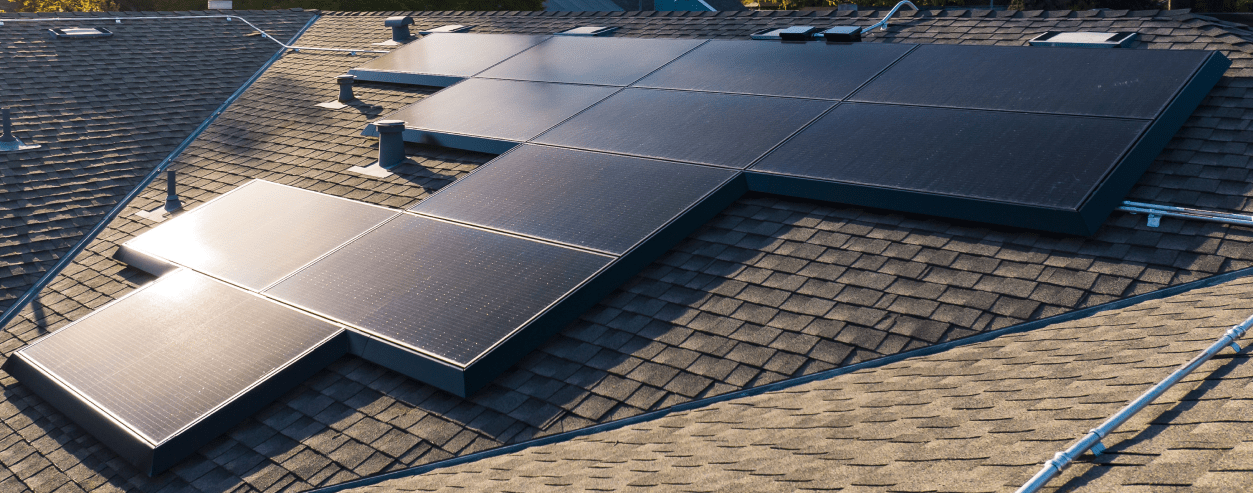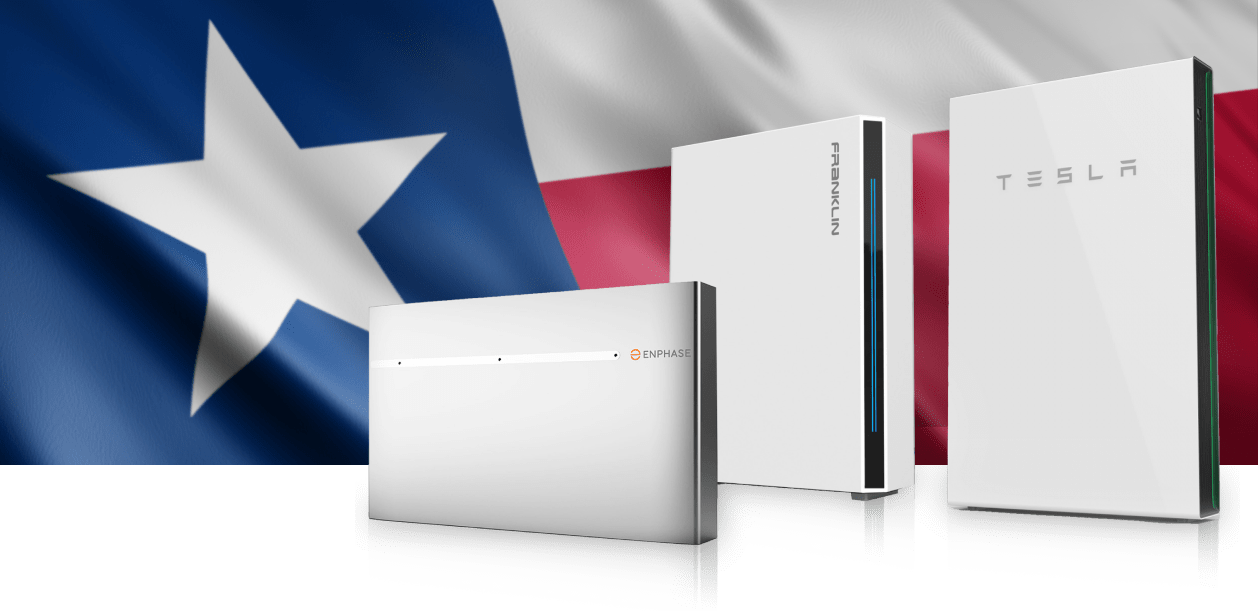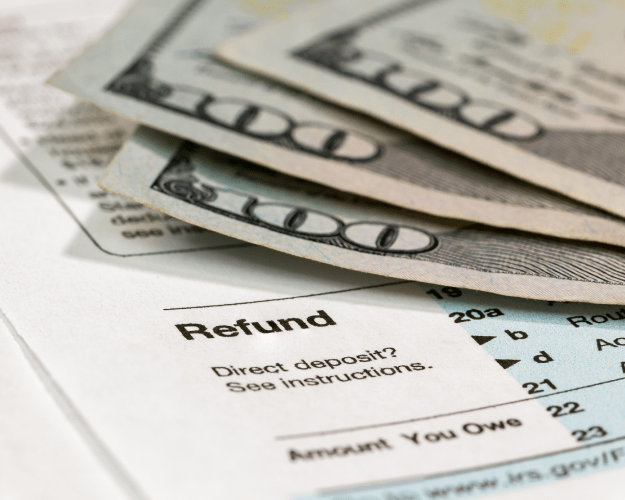

Texas is known for its abundant levels of sunshine, vast expanses of space, and for anyone who has driven along I-10, a wealth of wind turbines that produce more than a quarter of all wind generation in the U.S.* However, deadly winter storms and catastrophic power outages have accentuated cracks in the state’s energy infrastructure.
Increasingly powerful hurricanes, rising sea levels and hotter temperatures also plague Texas, impacting its air quality and water supply, posing a risk to public health. To help stabilize the climate and prevent further negative impacts, the Lone Star State must work to decarbonize.
By switching from fossil fuels to renewable energy, adopting less resource-intensive ways of living and building a closed-loop economy with zero waste, we can prevent the worst impacts of global warming and improve the health and welfare of people and ecosystems for generations to come.*
1. Texas Solar Incentives

As environmental regulations force older sources of electric generation to be retired across the Lone Star State, there is an increasing need for solar capacity to meet the growing demand for electricity. In fact, Texas is poised to become a national leader in solar energy.
With the cost of solar having fallen 54% over the last decade, experts predict more than 4 gigawatts (GW) of solar will come online in the next five years, making Texas #1 in the nation for installed capacity at nearly 40,800 megawatts (MW).*

The cost of electricity in Texas is traditionally lower than the national average. In May of 2023, residential electricity rates were 14.49 cents per kilowatt-hour (kWh), which was 11% below average.*
However, hotter-than-normal temperatures that blanketed the state throughout much of the summer caused the demand for electricity to spike to record levels in August, causing electricity prices to skyrocket. Since ERCOT’s power grid isn’t connected to the rest of the country, like most other grids in the U.S., there are few options to pull power from when an electricity shortage occurs. This also means that demand can outpace supply on the hottest summer days.
At Sunnova, we know solar is a significant investment for homeowners, which is why we want to help you take advantage of as many Texas solar incentives as possible to help you break even sooner on your solar investment. If you own your solar system — via either cash or loan — there are federal, state and local incentives that you may qualify for.
Federal Level: ITC for Home Solar

The solar investment tax credit (ITC) is one of the most important policies to support the widespread adoption of solar power in the United States. Since it was enacted in 2006, the ITC has been extended several times, helping the industry grow an average of 52% each year.* With the passing of the Inflation Reduction Act in August of 2022, the ITC has been extended for the next decade.
The federal tax credit helps Texas solar customers who purchase their residential solar system (via cash or loan) to deduct 30% of the cost of installing solar from their federal taxes. It’s not a tax deduction, but rather, it reduces what you owe on your taxes. The ITC can be rolled over for up to five years as long as the taxes you owe are less than the credit you earn.*
If you’re considering going solar with a loan and you pay federal taxes, the ITC may enable you to get a dollar-for-dollar reduction off the sticker price and can help you pay your system off sooner.
At Sunnova, we don’t give tax advice. Please consult your tax advisor to determine the incentives that you may qualify for.
State Level: Texas Property Tax Exemptions
Property tax is a locally assessed and locally administrated tax in Texas ― no separate state property tax exists. This money funds schools, roads, police and firefighters, libraries, parks and other services. The state offers exemptions from appraised property values that can remove a percentage or a fixed dollar amount from your property’s appraised value.
Texas Property Tax Code section 11.27 allows a 100% exemption on the increase in assessed property value of your property for installing a home solar system.*
Example: if your assessed value before solar panels was $300,000 and you installed a $30,000 rooftop solar system, your home wouldn’t be assessed at $330,000 ― it would remain at $300,000.

Therefore, thanks to this property tax exemption in Texas, solar panels won’t increase your residential property taxes.
Local Level: Solar Buyback Plans in Texas

A majority of the Texas electricity market is “deregulated,” meaning the electric supply and delivery are separate, and ratepayers can choose a competitive retail energy provider (REP). As you research your options for a solar panel installation, it’s also wise to explore REPs that offer solar buyback plans, which allow you to maximize your savings, if you live in a part of the state that is open to retail electric competition.
Texas solar buyback plans are similar to net energy metering (NEM), the billing arrangement where homeowners can send excess solar energy to the grid and receive utility bill credits in return. While the Lone Star State isn’t mandated to offer net metering programs, some REPs offer this benefit.
If you fall into the 15% or so of the state that’s served by an electric cooperative or municipal utility, your coop or municipal utility will handle the supply and distribution of your electricity. In that case, you’ll only have access to the solar buyback plans they offer (if they do).
For instance, CPS Energy and Austin Energy both offer buyback plans that credit customers at an attractive rate — at least for now. If you’re like most residents who live in a deregulated market, you can choose from a handful of REPs that offer various types of solar buyback plans in Texas. Understand that these buyback plans can vary considerably from one provider to the next.
Here are a few examples as of early 2023:*
Uncapped Plans (such as Reliant Energy and Pulse Power) have no limitations on the amount of surplus solar a customer can get credit for.
Credit-Capped Plans (such as Green Mountain Energy and TXU Energy)
These plans won’t issue credits above the amount of energy a household uses in a month.
Real-Time Metering (RTM) Plans (such as Octopus)
RTM plans compare the electricity your home pulled from the grid against the solar you sent to the grid, and then value your credits at the market rate.
Adaptive Retail Plan
Sunnova and David Energy have teamed up to leverage homeowners’ solar plus battery storage systems to create a virtual power plan (VPP). Sunnova customers can access the lowest retail rates, earn VPP credits annually and reduce overall energy costs.
Some plans are offered for 12 months, some for 24, others for 36. Certain plans have monthly base charges, while others don’t. The right Texas solar buyback plan for your particular situation will depend on various factors, from the size of your solar system to your monthly energy usage to the terms that can provide you with the most savings.
Talk to an energy advisor today to discuss the best solar buyback to meet your needs
2. Texas Battery Storage Incentives

The Lone Star State is no stranger to power outages. In fact, Texas had the second-highest number of outages in the U.S. (trailing California) throughout the past two decades: 82 last year alone and 1,565 over the past 10 years.*
After the deep freeze of 2021 that left millions of Texans without power and hundreds dead, the state has been working to update its infrastructure as extreme weather prevails. From prolonged heatwaves to Arctic freezes, severe weather is commonly to blame for widespread outages. But it’s not the only culprit. Transmission line issues can cut power to local communities, as can an insufficient supply of natural gas caused by distribution infrastructure failure.
What’s the best way to prepare your home for an outage? Installing solar plus battery storage in Texas can help keep your power on during a grid interruption, no matter the cause. By adding storage to your solar system, you can save the energy your panels produce to use later on — at night or if a storm or heatwave is on the horizon.
While installing a Texas battery storage system is more costly than a solar-only system, there are ways to reduce the payback period and realize a return on your system sooner. And remember: you can’t put a price tag on peace of mind during severe, unpredictable weather.
Federal Level: ITC for Solar Storage

The same ITC that reduces your cost of installing solar by 30% can be applied to an energy storage system you purchase. Prior to the Inflation Reduction Act, a home solar battery had to be charged entirely by a renewable energy source in order to qualify for the ITC. Starting in 2023, the 30% federal tax credit is now available for residential storage systems, regardless of how they are charged. This also means that stand-alone batteries that charge from the grid are now eligible for the federal tax credit under the new guidelines.
Since the Lone Star State is prone to outages, the smartest way to keep your power on during a grid interruption is by pairing solar with Texas battery storage. In doing so, you can ensure your energy security and keep your electricity flowing — even on the hottest or coldest days — without having to rely on the fragile grid.*
You may still be able to claim this tax credit if you add a battery to an existing residential solar system at a later date. Be sure to discuss your tax credit eligibility with a licensed tax expert.
3. Texas EV Charging Incentives

Electric vehicles are picking up speed across the great state of Texas. In the summer of 2023, the state hit a milestone with more than 200,000 EVs now registered. The Dallas-Fort Worth metro area had the highest percentage (36.7%), followed by Houston (24%) and then Austin (20.1%).*
Despite the recent surge in emission-free vehicles, EV charging stations in Texas are still lagging behind. While hundreds of millions of dollars are being allocated to build a network of charging stations along certain Texas highways, the majority of EV owners must still rely on home charging.
Fortunately, there are various home EV charging incentives in Texas offered at the local level.
Local Level: Utility-Sponsored EV Charging Rebates
Utilities throughout Texas see the value in home EV charging stations or Level 2 EV chargers. Many people are familiar with federal rebates to purchase electric vehicles, which were extended at the beginning of 2023 thanks to the IRA. However, fewer people know about the EV charging rebates available to help reduce the cost of installing at-home charging infrastructure.
Rebates sponsored by utilities can change or run out quickly, so it’s crucial to check with your local energy provider to ensure validity.
Here are a few Texas EV charging incentives offered in 2023:

- Austin Energy: Rebate of 50% of the cost to purchase and install a qualified Level 2 EV charging station, up to $1,200.*
- Southwestern Electric Power Company (SWEPCO): Rebate of $250 for installing an ENERGY STAR-certified Level 2 EV charger.*
- CPS Energy: Utility bill credit of $250 with the purchase of an EV charger when allowing CPS Energy to configure the device.*
- United Cooperative Services (UCS): Rebate of up to $1,200 for the installation of a Level 2 EV charger.*
- Entergy eTech: Qualifying customers are eligible for various rebates up to $250 when purchasing certain Level 2 EV chargers.*

If you’re ready to lower your carbon impact and reduce your cost of going solar in the Lone Star State — and you purchase your system outright — incentive programs can help. Texas solar incentives, utility rebates and property tax exemptions make adopting clean energy feasible for more homeowners.
But these incentives won’t last forever. If you’ve been thinking about solar, storage or buying an electric vehicle to help lock in your energy costs, the time to act is now.